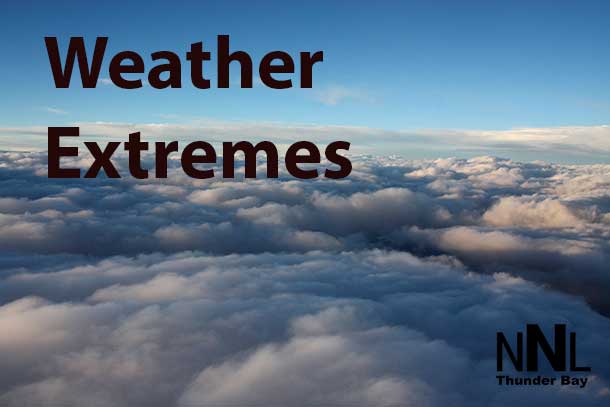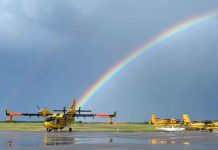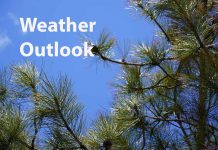
No Room for Doubt?
THUNDER BAY – WEATHER – It’s been a rough year, meteorologically speaking, on our planet. There has been record heatwaves, record snowfalls, record flooding, record droughts, all along with rising sea levels and super typhoons.
Extreme climate events are expected to continue.
2014 Year of Weather Extremes
While some see the argument as one that is either man-made or powered by solar energy the reality is that unless humanity starts to take action to reduce emissions and lower the planet’s temperature we are all going to see more and more problems caused by climate.
The simple reality is that even if you don’t believe in “Climate Change” the facts are that by using less energy, you are saving yourself money.
Ever wonder on Earth Day when protesters turn on all their lights, turn up the heat, run their appliances and vehicles, exactly what result they are hoping for? Making a difference in our personal lives is something that simply makes good economic sense.
Changing to LED lighting in businesses means saving money on the hydro bill. Driving more economical vehicles, or, heaven forbid taking transit can save you money. Getting a bike can combine savings with better health.
Changing Climate
Images from International Space Station Capture Storms
The threatened #Santabomb slide east of Thunder Bay. Rather than a dump of snow on Christmas, eastern Ontario and Quebec were hit with rain and severe wind. Hydro was knocked out on Christmas Day for 32,000 Hydro One customers in Ontario, and about 30,000 customers in Quebec.
Winter storms also pounded the deep south of the United States. NOAA reports, “Severe weather in the form of tornadoes is not something people expect on Christmas week but a storm system on Dec. 23 brought tornadoes to Mississippi, Georgia and Louisiana”.
Before NORAD started tracking Santa Claus, the NASA RapidScat aboard the International Space Station watched the storm system.
As the storm moved, NASA’s RapidScat captured data on winds while NOAA’s GOES satellite tracked the movement of the system.
NASA’s RapidScat instrument flies aboard the International Space Station and captured a look at some of the high winds from the storms that brought severe weather to the U.S. Gulf Coast on Dec. 23. In addition, an animation of images from NOAA’s GOES-East satellite showed the movement of those storms and other weather systems from Canada to South America from Dec. 21 to 24.
RapidScat spotted high winds in the Gulf of Mexico while Mississippi was experiencing tornadoes late on Dec. 23. One image RapidScat captured was on Dec. 23 at 1800 UTC (12 p.m. CST) that showed winds as fast as 30 meters per second/67.1 mph/108 kph off the southeastern coast of Texas. As the storm system moved east, on Dec. 24 at 02:00 UTC (Dec. 23 at 8 p.m. CST) RapidScat clocked sustained surface winds of the same strength near south central Louisiana and east of Mobile Bay, Alabama.
In addition to RapidScat imagery, NASA created an animation of visible and infrared satellite data from NOAA’s GOES-East satellite that showed the development and movement of the weather system that spawned tornadoes affecting the Gulf Coast of the U.S. on Dec. 23 and early Dec. 24.
To create the images and the video, NASA/NOAA’s GOES Project takes the cloud data from NOAA’s GOES-East satellite and overlays it on a true-color image of land and ocean created by data from the Moderate Resolution Imaging Spectroradiometer (MODIS) instrument that flies aboard NASA’s Aqua and Terra satellites. Together, those data created the entire picture of the storm systems and show their movement.
Coupled with local weather observations, soundings, and computer models, data from satellites like NOAA’s Geostationary Operational Environmental Satellite or GOES-East (also known as GOES-13) gives forecasters information about developing weather situations. In real-time, the NOAA’s GOES-East satellite data in animated form showed forecasters how the area of severe weather was developing and moving.
According to NOAA’s National Weather Service (NWS), holiday travel on Dec. 24 includes widespread rain for the eastern U.S., snow and wind for the Great Lakes and more snow for the Great Basin and Rocky Mountains.
In the Short Range Public Discussion on Dec. 24, NWS noted: Severe weather will continue to be possible across portions of the Southeast with damaging winds as the primary threat; however tornadoes cannot be ruled out. Strong winds will also be possible from the Tennessee Valley into the Northeast.
NWS forecasts cited “a broad area of steady rain is expected from Florida to New England, with the heaviest rainfall occurring south of the Virginia state line. The southeastern states can expect some strong to severe thunderstorms ahead of the cold front. On the western side of the developing surface low, rain is expected to change to snow from Illinois to northern Michigan, with several inches of snow accumulation a possibility. There will also be a fair amount of wind over this region as the low intensifies. Some higher-elevation snow showers are also possible for parts of the central and northern Appalachians after the cold front moves through.
In the western U.S., a Pacific storm system is expected to bring widespread snow showers from Washington State to the western High Plains on Thursday, Dec. 25 giving many in those areas a white Christmas. The greatest accumulations are expected for the higher mountain ranges of the central and northern Rockies.”
NOAA’s GOES-East satellite sits in a fixed orbit in space capturing visible and infrared imagery of weather over the eastern U.S. and Atlantic Ocean. The GOES-East satellite is operated by the National Oceanic and Atmospheric Administration. NASA/NOAA’s GOES Project at the NASA Goddard Space Flight Center in Greenbelt, Maryland created the animation of GOES-East satellite data that covered the period during the severe weather.





